
Table of Contents
A walking tour is a tour of historical or cultural sites, usually in an urban setting on foot. Short trips can take less than an hour, while longer trips can span multiple locations and last a full day or more. You can lead the guide as a companion.
In Pakistan, walking tours can be entertaining. You can stroll around the interior streets of Punjab and Sindh or enjoy the culture of food streets in any city. Besides street art and culture, you can take a walk in the deep woods of Usho forest in Swat or stroll around the Kachura Valley in Skardu.
Each place in Pakistan is filled with color, celebration, happy faces, food, and whatnot. Walking Tours in Pakistan are more like a tour to any tourist than absorbing the expression in your memory lane.
Walking tours or trekking tours often differ from escorted tours by their duration and use of a guide, which can take as little as 12 hours or last a week or more.
You can take a walk anywhere in Pakistan without any permission. From Gwadar to KPK, to any street of Punjab or Sindh. Free walking tours can be done on your own or with any tour guide.
Street Art Walking Tours are mainly found in Karachi, Lahore, and Islamabad, where different street artists show their works in specific places.
Foodies will love this tour, as Pakistan is full of spices and tastes. You can find food items in each corner, from pakoras to fancy dinners. Every place in Pakistan offers delicious food that you can eat while on a walking tour.
Pakistan has so many events throughout the year. On a walking tour, you will find live entertainment on the roads and streets and even at traditional weddings. Every place in Pakistan offers a unique touch of colors and music.
The autonomy offered by a tour guide is more significant than that provided by a tour guide but less than that shown by fully independent travel. Unless you’re fully prepared, traveling alone can be very stressful, and there’s a lot of room for error.
With Pakistan Tour and Travel self-guided walking tours, you can choose a wide range of walking routes.
Not only that, but you have options within the hiking trails; you can choose between easy, moderate, and challenging routes that let you decide how far you go each day.
Guided tours often connect you to dates when more people go. With our guide, you can choose the day you want to start. Our trip lasted from the beginning of March to the end of October.
You can also stop as often as you want, whenever and wherever you want, and take as many photos as you wish. The freedom to travel is yours!
While the tourist won’t have as much social interaction as a tour guide, you’ll have more freedom to interact with the locals in the area you’re visiting. This provides a more realistic experience while also allowing you to choose when and who to interact with.
The stress mentioned above often comes from traveling altogether independently and worrying about not finding the right place to stay.
With a self-guided tour, your stay is complete from start to finish before you start your tour. It will ensure a comfortable resting place after a day of travel.
At Pakistan Tour and Travel, we’ve personally checked the accommodation we book for you so that you can be assured of the best quality available.
If you don’t want to carry heavy luggage with you when you travel, your luggage will be moved between your accommodation locations. This means you don’t need to use the backpack until you need it.
The self-satisfaction of completing a self-guided walking tour is far greater than that of a guided tour. You feel a sense of accomplishment as you navigate the path of your choice.
Take a self-guided stroll along Hunza Valley or Skardu Valley and stroll along the magnificent lakes.
The safety grill of the self-guided tour is the most comfortable aspect.
Hidden in the northwest corner of Pakistan, Chitral is entirely isolated and surrounded by mountains. The Kalash Mountains lie to the west, and the Hindu Kush Mountains climb northwards, separating them from Afghanistan. Shandur and Hindu Raj Chitral separate them from the rest of Pakistan in the east and south. The wild Chitral country of the Alps, narrow forested valleys, ancient cultures, and hospitable people give it a unique and charming character.
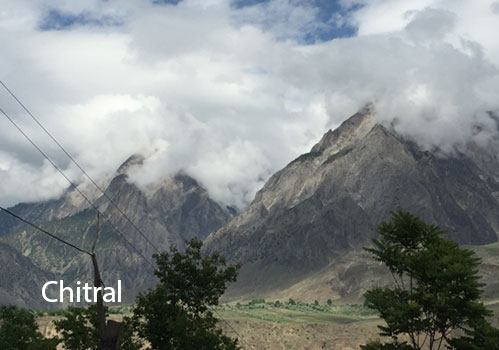
Walking Tours In North Pakistan: Chitral
Snow-capped peaks tower over cultivated valleys, and the highest peak of the Hindu Kush can be seen from Chitral’s lookout point Trich Mir (7706 m). The Hindu Kush has 38 peaks above 7000m, including Noshq (7492m), Istor-o-Nal (7403m), and Saragharar (7349m). Surrounding the sides of the peak, many large glaciers spew rapids that eventually pour into the Chitral River. From the heavily forested southern valleys to the arid open northern highlands, Chitral, perhaps due to its isolation, remains a delight for hikers. Top walking treks in Chitral are:
Possibly the most fascinating valley in northern Pakistan and the invasion of ancient civilizations, the famous Ondra Fort was built around 200 years ago to ward off potential outside invaders.
This stunning valley is 140 kilometers from Gilgit, 45 kilometers from Karimabad Hunza Valley, and 136 kilometers from the world’s surface, the famous Hangerab Pass on the Chinese border. This one is worth a visit, especially for explorers and nature lovers. The renowned valley is rich in natural resources, the sheer beauty of the stream flowing down the mountain, and the hospitable people who inhabit the looming flying mountains.
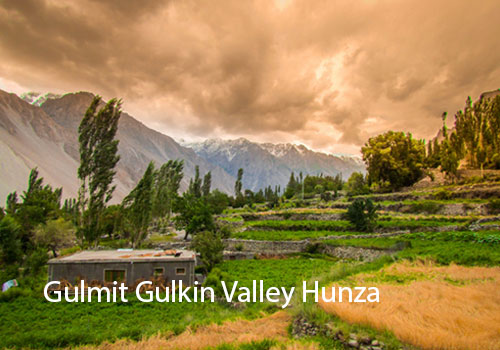
Walking Tours In North Pakistan: Gulkin
Set at 2,500 feet above sea level, the village of Goulmeet is surrounded by majestic mountains and stunning glaciers from which enough meltwater is gushing out to feed the Hunza River. Some rugged peaks like Shispare Peak at 7,611 meters and the magnificent Gulmit tower at 5,810 meters. Passu Cones Mountain, at 6106 meters, is the most impressive peak.
Gilgit-Baltistan’s climate is naturally mountainous, keeping temperatures relatively cool in winter and pleasant enough in summer. Great color most seasons.
Shimshal Valley Road is a twisty mountain road, and speeds rarely exceed 10km/h. It is a hazardous trekking route located in Gojar, Hunza-Nagar District, Pakistan, in Gilgit-Baltistan (formerly North District).
The length of the road is 35 miles (56 kilometers). This is serious leadership. It is not suitable for bisexuals, and novice drivers should try it. The highway connects the Karakoram Highway in Basu (2,485 meters above sea level) with the beautiful village of Chemshal in Gojal, Hunza Nagar province, at 3,113 meters (10,213 feet) above sea level. It is the highest settlement in Pakistan’s Hunza Valley. It is a border town connecting the Gilgit Baltistan Pakistan province with China.
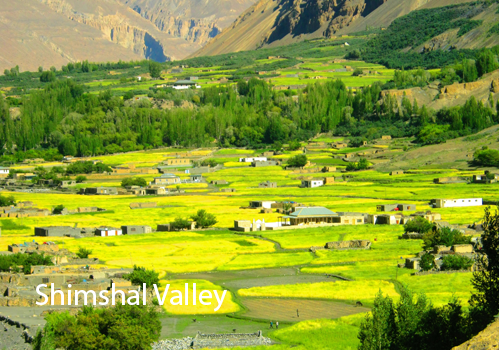
Walking Tours In North Pakistan: Shimshal Valley
Hiking and yak safari are popular attractions in Shimshal Valley. The Shimshal trek is the main activity in the area as it offers beautiful views of the high grass in the valley, including the view of Minglik Sar at the height of 6000 meters and the beautiful lake known as Shimshal Lake with fluffy grass edges on one side.
Kachura is one of the beautiful valleys in the Skardu region, with two beautiful lakes, Upper Kachula and Lower Kachula, at an altitude of 2,500 meters. There is a resort on Lower Kachula Lake, known as Shangri-La Resort, a popular tourist destination for locals, and foreign tourists.
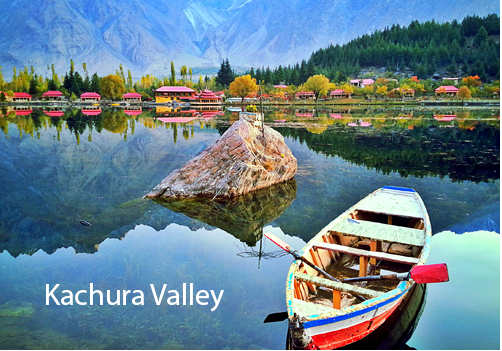
Walking Tours In North Pakistan: Kachura Valley
Skardu is a picturesque valley with azure waters and towering mountains, located at more than 7,300 feet (2,225 m) above sea level in the Gilgit-Baltistan region of northern Pakistan.
Fresh spring water, delicious fruits, blue waters of the Indus, places of interest, lakes, and a pleasant climate enrich the valley’s beauty and attract tourists from all over the world.
Skardu Valley is the main urban center and home to Skardu District, a strategic area of northern Pakistan bordering China, Afghanistan, and India.
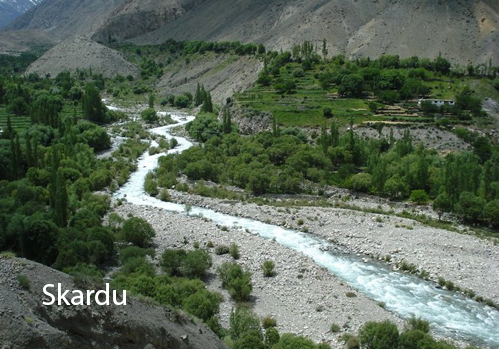
Walking Tours In North Pakistan: Skardu
Known as an important tourist and hiking center, the valley is the gateway to four peaks over 8,000 meters above sea level, attracting tourists, climbers, and hikers from abroad.
Ayun Valley is the city of Chitral. It is located at the confluence of the Bainbrett River, 12 kilometers south of the town. There are no words to describe the privilege of the mountains surrounding the city. Bamburet Valley is located after Ayun Valley and is one of the three Kalash Valleys.
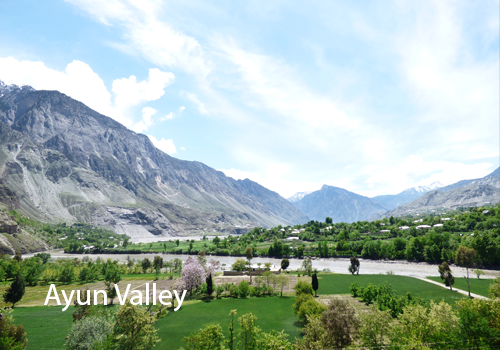
Walking Tours In North Pakistan: Ayun Valley
The Kalash valley is the only greek minority living in the Chitral district of Khyber Pakhtunkhwa province. They are the smallest minority in the Islamic Republic of Pakistan. While the Kalash tribe used to be numerous, around 200,000 people have dwindled to just a few Kalash people, about 3000 to 4000 people. The staggering decline of the Kalash population is related to the forced conversion of these infidels to Islam. Even under the current circumstances, the smaller pagan minority is hardly granted any rights and is not considered a separate entity.

Walking Tours In North Pakistan: Kalash Valley
The Kalasha live in the three valleys of Chitral, Rambur, Bumbret, and Barir. Rambur and Brumbret constitute a monoculture due to their very similar cultural practices, while Barir, being the most traditional, constitutes a distinct culture. Kalash or white skin, blond brown hair, and blue eyes.
While walking tours can be so excellent yet informative, you witness the Kalash architecture, a unique fusion of ancient woodwork and medieval collage traditions. Kalash architecture often features beautifully carved wooden columns and beams adorned with human and animal figures and statues, each representing a specific myth and legend. The top walking tours you can do in Kalash treks are:
Bamburet is about a two-hour adventure from Chitral. The natives follow Alexander the Great and the basic foundations of Greece. Bumburet Valley is a pleasant valley with many plants and mountains that give a sense of calm and seclusion.
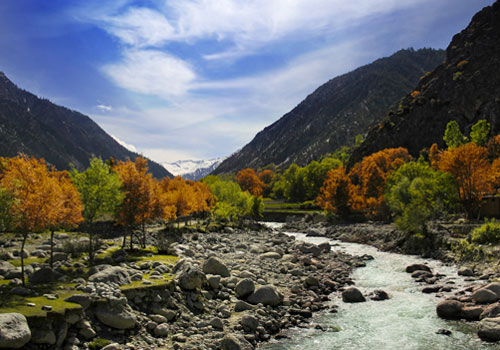
Bumburet Valley; Chitral
Since 2017, Saba Ghani has been serving as the talented and dedicated chief content writer for Pakistan Tour and Travel & EMHI Solutions. With her exceptional writing skills and in-depth knowledge of the travel industry, she has been instrumental in crafting engaging and informative content that captivates the audience. You can catch her at [email protected] or Twitter
Reliable Pakistan Tour Packages from Islamabad & Karachi